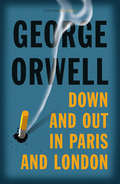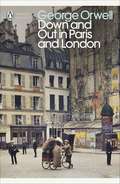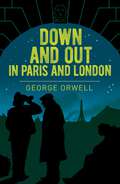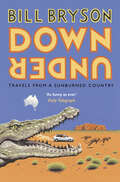- Table View
- List View
DOT symbols: coat check, baggage lockers (Large Print)
by RnibOn this page there are two US Department of Transport (DOT) pictograms used for signage and travel information: a coat check symbol and a baggage lockers pictogram. There is a locator dot shown, which will be at the top left of the page when the image is the correct way up. The coat check symbol is at the top of the page. It is a stylised image of a coat hanger with its hook at the top of the image. The baggage lockers pictogram is at the bottom of the page. At the top of the pictogram is a key with its blade to the right and below this is a rectangle representing a locker. This has a stylised image of a suitcase inside it.
DOT symbols: heliport, taxi (UEB Contracted)
by RnibOn this page there are two US Department of Transport (DOT) pictograms used for signage and travel information: a heliport pictogram and a taxi pictogram. There is a locator dot shown, which will be at the top left of the page when the image is the correct way up. The heliport pictogram is at the top of the page. It shows a stylised image of a helicopter seen from the side with its front to the right. At the top of the image is the main rotor and from left to right you can find the tail rotor, the tail boom and the cockpit with three windows. At the bottom of the image, you can find one of the skids that the helicopter lands on. The taxi pictogram is at the bottom of the page. It is a stylised image of a taxi seen from the front. At the top of the taxi image is its taxi sign and below this are the front window, two headlights and two front wheels.
DOT symbols: hotel information, air transportation (UEB Contracted)
by RnibOn this page there are two US Department of Transport (DOT) pictograms used for signage and travel information: a hotel information pictogram and an air transportation pictogram. There is a locator dot shown, which will be at the top left of the page when the image is the correct way up. The hotel information pictogram is in the top left of the page. It consists of a print question mark in a circle with a stylised image of a person in bed down the page. The person and bed are seen from the side. The headboard is to the left. To the right of this is the persons head resting on one of their bent arms. To the right is the bedcover and foot of the bed. The beds legs are at the bottom of the image. The air transportation pictogram is a silhouette of a passenger aircraft at the bottom right of the page. It is seen from above with its nose at the top and its wings and tail plane extending to the left and right.
DOT symbols: hotel information, air transportation (Large Print)
by RnibOn this page there are two US Department of Transport (DOT) pictograms used for signage and travel information: a hotel information pictogram and an air transportation pictogram. There is a locator dot shown, which will be at the top left of the page when the image is the correct way up. The hotel information pictogram is in the top left of the page. It consists of a print question mark in a circle with a stylised image of a person in bed down the page. The person and bed are seen from the side. The headboard is to the left. To the right of this is the persons head resting on one of their bent arms. To the right is the bedcover and foot of the bed. The beds legs are at the bottom of the image. The air transportation pictogram is a silhouette of a passenger aircraft at the bottom right of the page. It is seen from above with its nose at the top and its wings and tail plane extending to the left and right.
DOT symbols: heliport, taxi (Large Print)
by RnibOn this page there are two US Department of Transport (DOT) pictograms used for signage and travel information: a heliport pictogram and a taxi pictogram. There is a locator dot shown, which will be at the top left of the page when the image is the correct way up. The heliport pictogram is at the top of the page. It shows a stylised image of a helicopter seen from the side with its front to the right. At the top of the image is the main rotor and from left to right you can find the tail rotor, the tail boom and the cockpit with three windows. At the bottom of the image, you can find one of the skids that the helicopter lands on. The taxi pictogram is at the bottom of the page. It is a stylised image of a taxi seen from the front. At the top of the taxi image is its taxi sign and below this are the front window, two headlights and two front wheels.
DOT symbols: hotel information, air transportation (UEB Uncontracted)
by RnibOn this page there are two US Department of Transport (DOT) pictograms used for signage and travel information: a hotel information pictogram and an air transportation pictogram. There is a locator dot shown, which will be at the top left of the page when the image is the correct way up. The hotel information pictogram is in the top left of the page. It consists of a print question mark in a circle with a stylised image of a person in bed down the page. The person and bed are seen from the side. The headboard is to the left. To the right of this is the persons head resting on one of their bent arms. To the right is the bedcover and foot of the bed. The beds legs are at the bottom of the image. The air transportation pictogram is a silhouette of a passenger aircraft at the bottom right of the page. It is seen from above with its nose at the top and its wings and tail plane extending to the left and right.
DOT symbols: heliport, taxi (UEB Contracted)
by RnibOn this page there are two US Department of Transport (DOT) pictograms used for signage and travel information: a heliport pictogram and a taxi pictogram. There is a locator dot shown, which will be at the top left of the page when the image is the correct way up. The heliport pictogram is at the top of the page. It shows a stylised image of a helicopter seen from the side with its front to the right. At the top of the image is the main rotor and from left to right you can find the tail rotor, the tail boom and the cockpit with three windows. At the bottom of the image, you can find one of the skids that the helicopter lands on. The taxi pictogram is at the bottom of the page. It is a stylised image of a taxi seen from the front. At the top of the taxi image is its taxi sign and below this are the front window, two headlights and two front wheels.
DOT symbols: rail transportation, water transportation (Large Print)
by RnibOn this page there are two US Department of Transport (DOT) pictograms used for signage and travel information: a pictogram for rail transportation and a pictogram to represent water transportation. There is a locator dot shown, which will be at the top left of the page when the image is the correct way up. The rail transportation pictogram is at the top left of the page. It is a stylised image of rail locomotive seen from the front. At the top of the image are two small circles representing horns and further down the page are the destination window, the windscreen, two larger headlights and the two rails seen in perspective. The water transportation pictogram is in the bottom right of the page. It shows a stylised image of a passenger ship seen from the front. At the top of the image is one of the ships funnels. Down from here are the bridge, the ships prow and at the bottom two thick wavy lines representing water.
DOT symbols: rail transportation, water transportation (UEB Uncontracted)
by RnibOn this page there are two US Department of Transport (DOT) pictograms used for signage and travel information: a pictogram for rail transportation and a pictogram to represent water transportation. There is a locator dot shown, which will be at the top left of the page when the image is the correct way up. The rail transportation pictogram is at the top left of the page. It is a stylised image of rail locomotive seen from the front. At the top of the image are two small circles representing horns and further down the page are the destination window, the windscreen, two larger headlights and the two rails seen in perspective. The water transportation pictogram is in the bottom right of the page. It shows a stylised image of a passenger ship seen from the front. At the top of the image is one of the ships funnels. Down from here are the bridge, the ships prow and at the bottom two thick wavy lines representing water.
DOT symbols: rail transportation, water transportation (UEB Contracted)
by RnibOn this page there are two US Department of Transport (DOT) pictograms used for signage and travel information: a pictogram for rail transportation and a pictogram to represent water transportation. There is a locator dot shown, which will be at the top left of the page when the image is the correct way up. The rail transportation pictogram is at the top left of the page. It is a stylised image of rail locomotive seen from the front. At the top of the image are two small circles representing horns and further down the page are the destination window, the windscreen, two larger headlights and the two rails seen in perspective. The water transportation pictogram is in the bottom right of the page. It shows a stylised image of a passenger ship seen from the front. At the top of the image is one of the ships funnels. Down from here are the bridge, the ships prow and at the bottom two thick wavy lines representing water.
DOT symbols: ticket purchase, baggage check-in (UEB Contracted)
by RnibOn this page there are two US Department of Transport (DOT) pictograms used for signage and travel information: a ticket purchase pictogram and a baggage check-in pictogram. There is a locator dot shown, which will be at the top left of the page when the image is the correct way up. The ticket purchase pictogram is at the top of the page. It consists of the stylised images of two people standing at a ticket purchase counter. On the left of the image is a person holding up a ticket with their hand to the right. They are facing to the front and can only be seen from the waist up as their legs are hidden by the counter, which stretches across the centre of the image. The person to the right is seen from behind and both their legs and arms can be found. They are holding out their hand to the left to take the ticket. The baggage check-in pictogram is at the bottom of the page. It is a stylised image of a suitcase seen from the side. The handle is at the top of the image and there is a strap going from top to bottom on each side.
DOT symbols: ticket purchase, baggage check-in (Large Print)
by RnibOn this page there are two US Department of Transport (DOT) pictograms used for signage and travel information: a ticket purchase pictogram and a baggage check-in pictogram. There is a locator dot shown, which will be at the top left of the page when the image is the correct way up. The ticket purchase pictogram is at the top of the page. It consists of the stylised images of two people standing at a ticket purchase counter. On the left of the image is a person holding up a ticket with their hand to the right. They are facing to the front and can only be seen from the waist up as their legs are hidden by the counter, which stretches across the centre of the image. The person to the right is seen from behind and both their legs and arms can be found. They are holding out their hand to the left to take the ticket. The baggage check-in pictogram is at the bottom of the page. It is a stylised image of a suitcase seen from the side. The handle is at the top of the image and there is a strap going from top to bottom on each side.
DOT symbols: ticket purchase, baggage check-in (UEB Uncontracted)
by RnibOn this page there are two US Department of Transport (DOT) pictograms used for signage and travel information: a ticket purchase pictogram and a baggage check-in pictogram. There is a locator dot shown, which will be at the top left of the page when the image is the correct way up. The ticket purchase pictogram is at the top of the page. It consists of the stylised images of two people standing at a ticket purchase counter. On the left of the image is a person holding up a ticket with their hand to the right. They are facing to the front and can only be seen from the waist up as their legs are hidden by the counter, which stretches across the centre of the image. The person to the right is seen from behind and both their legs and arms can be found. They are holding out their hand to the left to take the ticket. The baggage check-in pictogram is at the bottom of the page. It is a stylised image of a suitcase seen from the side. The handle is at the top of the image and there is a strap going from top to bottom on each side.
Double Cross (Alex Cross #13)
by James PattersonJust when Alex Cross's life is calming down, he's drawn back into the game to confront the Audience Killer - a terrifying genius who stages his killings as public spectacles in Washington, DC and broadcasts them live on the net. In Colorado, another criminal mastermind is planning a triumphant return. From his maximum-security prison cell, Kyle Craig has spent years plotting his escape and revenge. Craig prefers to work alone, but if joining forces with DC's Audience Killer helps him to get the man who put him away - Alex Cross - then so be it ...
Double decker bus (large print)
by RnibThis double decker bus is shown from the side. There is a locator dot shown, which will be at the top left of the page when the image is the right way up. The front is on the left of the page and the rear is on the right. At the front of the bus in the bottom left corner, there is a door with a window. There are many windows on the bus; there is a row along the top of the bus for the upper deck, and a row below for the lower deck. At the bottom of the bus two wheels are shown.
Double decker bus (UEB Contracted)
by RnibThis double decker bus is shown from the side. There is a locator dot shown, which will be at the top left of the page when the image is the right way up. The front is on the left of the page and the rear is on the right. At the front of the bus in the bottom left corner, there is a door with a window. There are many windows on the bus; there is a row along the top of the bus for the upper deck, and a row below for the lower deck. At the bottom of the bus two wheels are shown.
Double decker bus (UEB uncontracted)
by RnibThis double decker bus is shown from the side. There is a locator dot shown, which will be at the top left of the page when the image is the right way up. The front is on the left of the page and the rear is on the right. At the front of the bus in the bottom left corner, there is a door with a window. There are many windows on the bus; there is a row along the top of the bus for the upper deck, and a row below for the lower deck. At the bottom of the bus two wheels are shown.
Down and Dirty in the Dordogne
by Andrea FrazerThis is the story of how two middle-aged Brits gave up a nice life in Blighty after falling in love with a delightfully dilapidated old French property.It’s no mean feat trying to restore a cavernous barn of a house (hovel) during the worst financial crisis of the modern age, especially when you’re faced with dodgy builders, red tape, rowdy locals, health problems, recalcitrant relatives, a house in England that simply won’t sell, and a multitude of escapologist cats – not to mention some resident skeletons.Andrea Frazer gives the lowdown on the ups and downs that befall two fish out of water as the couple take the plunge and move across the Channel.
Down and Out in Paris and London (Collins Classics)
by George OrwellHarperCollins is proud to present its incredible range of best-loved, essential classics.
Down and Out in Paris and London (Penguin Modern Classics)
by George Orwell'You have talked so often of going to the dogs - and well, here are the dogs, and you have reached them.' George Orwell's vivid memoir of his time among the desperately poor and destitute in London and Paris is a moving tour of the underworld of society. Here he painstakingly documents a world of unrelenting drudgery and squalor - sleeping in bug-infested hostels and doss houses, working as a dishwasher in the vile 'Hôtel X', living alongside tramps, surviving on scraps and cigarette butts - in an unforgettable account of what being down and out is really like.Includes an introduction by Dervla Murphy, as well as definitive footnotes assigned to Orwell.
Down and Out in Paris and London (Arcturus Essential Orwell)
by George Orwell'The mass of the rich and the poor are differentiated by their incomes and nothing else, and the average millionaire is only the average dishwasher dressed in a new suit.'In 1928 the young George Orwell arrived in Paris, a city known as a thriving art scene and home to some of literature's most esteemed figures. It was not long before the money ran out, and Orwell, now destitute, was forced to take on the menial work of a dishwasher to survive. Drawing on Orwell's own experiences, Down and Out in Paris and London lays bare the realities of life amongst the poorest members of society and reveals a hidden world of drudgery, squalor, and anxiety. This insightful memoir brings home the evils of poverty and reminds us that before we judge those less fortunate than ourselves, we first should live as they do.ABOUT THE SERIES: Arcturus Essential Orwell presents George Orwell's most acclaimed fiction and non-fiction titles with striking contemporary cover-designs. These unique paperback editions are wonderful collectibles which celebrate one of the most important voices of the 20th century.
Down the Nile: Alone in a Fisherman's Skiff
by Rosemary MahoneyRosemary Mahoney was determined to take a solo trip down the Egyptian Nile in a small boat, even though civil unrest and vexing local traditions conspired to create obstacles every step of the way. Starting off in the south, she gained the unlikely sympathy and respect of a Muslim sailor, who provided her with both a seven-foot skiff and a window into the culturally and materially impoverished lives of rural Egyptians. Egyptian women don't row on the Nile, and tourists aren't allowed to for safety's sake. Mahoney endures extreme heat during the day, and a terror of crocodiles while alone in her boat at night. Whether she's confronting deeply held beliefs about non-Muslim women, finding connections to past chroniclers of the Nile, or coming to the dramaticm realization that fear can engender unwarranted violence, Rosemary Mahoney's informed curiosity about the world, her glorious prose, and her wit never fail to captivate.
Down To The Sea In Ships: Of Ageless Oceans and Modern Men
by Horatio Clare'Magnificent' Robert MacfarlaneWinner of the Stanford Dolman Travel Book of the YearOur lives depend on shipping but it is a world which is largely hidden from us. In every lonely corner of every sea, through every night, every day, and every imaginable weather, tiny crews of seafarers work the giant ships which keep landed life afloat. These ordinary men live extraordinary lives, subject to dangers and difficulties we can only imagine, from hurricanes and pirates to years of confinement in hazardous, if not hellish, environments. Horatio Clare joins two container ships on their epic voyages across the globe and experiences unforgettable journeys. As the ships cross seas of history and incident, seafarers unfold the stories of their lives, and a beautiful and terrifying portrait of the oceans and their human subjects emerges.'Tremendous' The Times
Down Under: Travels in a Sunburned Country (Bryson #6)
by Bill BrysonIt is the driest, flattest, hottest, most desiccated, infertile and climatically aggressive of all the inhabited continents and still Australia teems with life – a large portion of it quite deadly. In fact, Australia has more things that can kill you in a very nasty way than anywhere else.Ignoring such dangers – and yet curiously obsessed by them – Bill Bryson journeyed to Australia and promptly fell in love with the country. And who can blame him? The people are cheerful, extrovert, quick-witted and unfailingly obliging: their cities are safe and clean and nearly always built on water; the food is excellent; the beer is cold and the sun nearly always shines. Life doesn’t get much better than this…
Downhill all the Way: From La Manche to the Mediterranean by Bike
by Edward EnfieldFed up with questions about what he was going to do when he retired, Edward decided to get on his bicycle and ride from Le Havre to the Mediterranean. Armed with a tent and a smattering of French, he struggled in Normandy to get directions from old men tipsy on Calvados by 9 a.m., and hit his stride on the towpath of the Burgundy canal.









